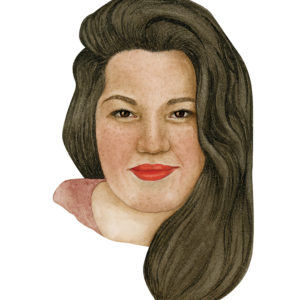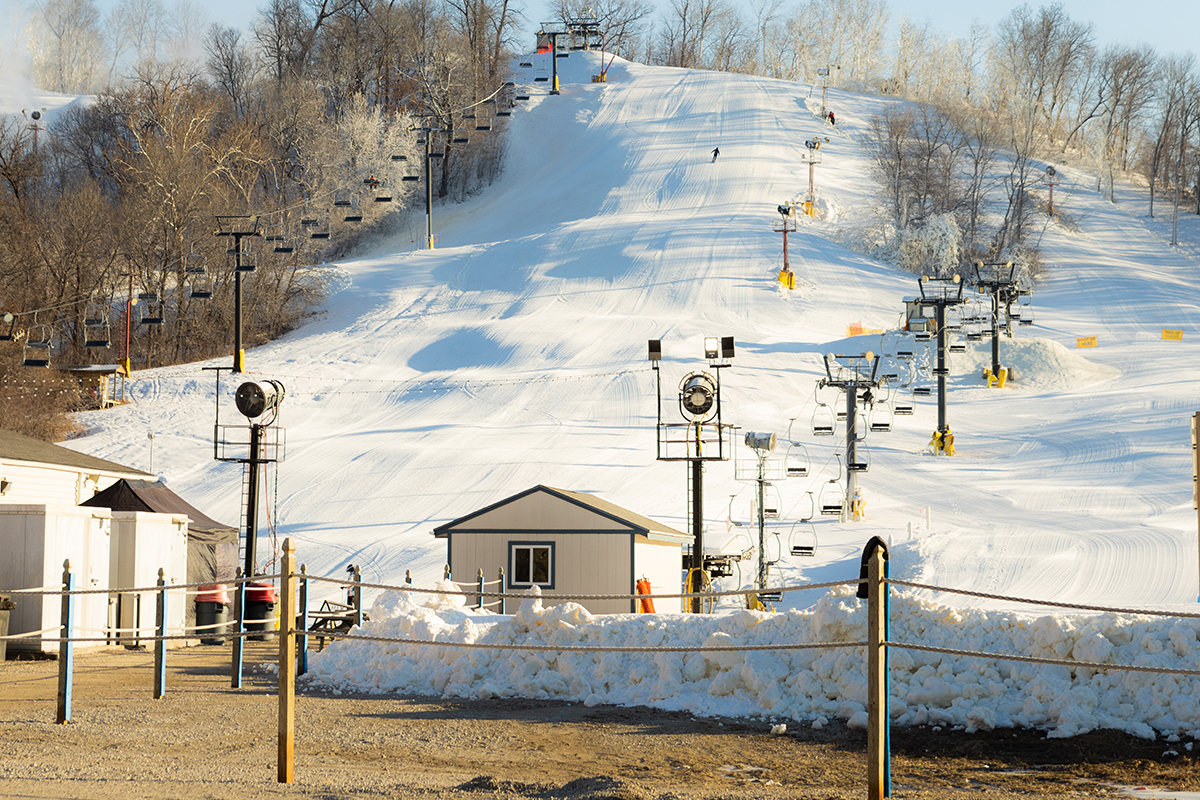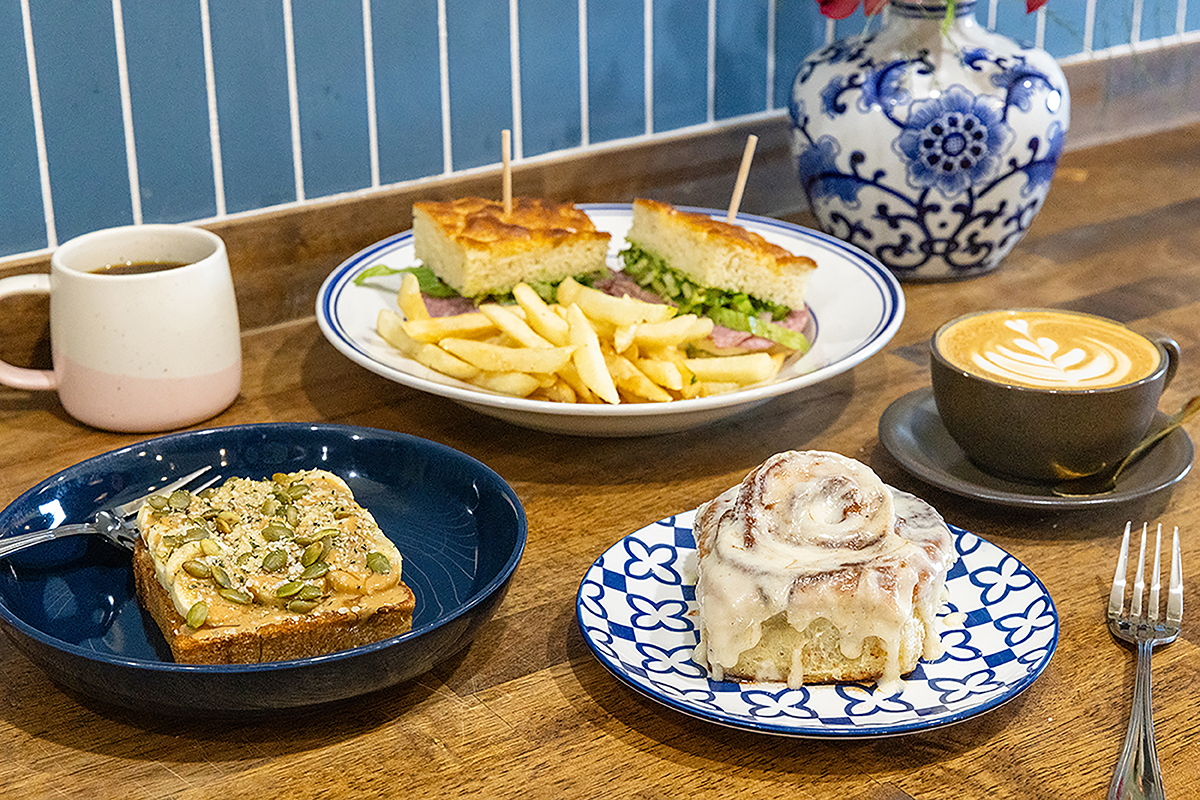You remember, in first grade or so, when you had to trace your hand onto a piece of construction paper and fashion it into a turkey? Maybe you put a little black and white Pilgrim hat on it and named him “Mr. Gobble.” This art project, which has lined the hallways of elementary schools for decades, has routinely marked the approach of Thanksgiving. Usually the production of this craft has accompanied the origin story of this holiday: A year after landing at Plymouth Rock in 1620, Pilgrims sat down to a bountiful feast with friendly Natives, a symbol of New World harmony.
That story is largely myth. There was a dinner between Wampanoag Indians and colonists in New England in the autumn of 1621, but the details are much more complicated and the event was an anomaly. The full story of the alliance that led to Thanksgiving, and the bloody war that followed, would likely give children nightmares.
In the early 1600s, Missouri and Kansas were relatively untouched by colonialism. (They would remain that way until the 1680s, when the French claimed a bulk of central North America.) The territory was home to several tribes: Chickasaw, Illini, Ioway, Otoe, Missouria, Osage and Quapaw.
“There were many different tribal nations, and each had different ways of getting things during different seasons,” says Jimmy Beason, a faculty member in the American Indian Studies Department at Haskell Indian Nations University and a member of the Osage Nation. “The overall notion of Thanksgiving that we have today is wrapped in mythology, with Pilgrims sitting down to a feast. There’s actually only one account of that ever happening. In the Missouri and Kansas territories, what we know for certain was tribes would have been acknowledging the changing of the seasons and preparing for the winter.”
Tribes would have consumed whatever their environment provided. Osages and Missouria were semi-nomadic, combining hunting, growing and gathering. They hunted wild game—bison, elk, deer—and planted beans, corn and squash. They would plant their crops in the spring, leave their village for a long summer hunt out West and return to harvest their crops in the fall. They also gathered wild foods in large quantities: paw paws (a tree fruit with a uniquely tropical taste), acorns, walnuts, hazelnuts, prickly pear cactus, onions, berries, prairie turnips, persimmons, water lily roots, wild bergamot and yonkapins (wild lotus root).
“Those things would have been harvested and taken care of prior to the winter,” Beason says. “Right now, we’re not living out in the woods. We have central heating. But in those times, preparing for winter was on everyone’s mind, and that meant food acquisition.”
Once the frost set in and the snow arrived, fresh fruit and vegetables would be unavailable for several months. Tribes would have dried a majority of their crop and foraged foods to ensure they had enough to carry them through the winter.
“Tribes would save seeds, dry potatoes, squash and green beans, pound and dry the corn,” says historian and writer Devon Mihesuah, the Cora Lee Beers Price Professor in International Cultural Understanding at the University of Kansas. She is also a citizen of the Choctaw Nation and a Chickasaw descendant. “Osages were similar to Northern Plains tribes in that they made pemmican, which is pounded bison meat, bison fat and chokecherries. It’s not like the pemmican bars we have today—chokecherries are very bitter.”
But it was sustenance, Mihesuah says.
“The winter months, for my tribe, was starving time,” she says. “You’re waiting for spring and warm winds because that’s when lamb’s quarters and pokeweed and all kinds of little greens come up.” Mihesuah has dedicated her career to documenting indigenous foods and recovering indigenous heritage. She runs the popular Facebook group Indigenous Eating, and her latest book, Recovering Our Ancestors’ Gardens, explores how indigenous peoples may reclaim the traditions of their forebearers. There’s also a hefty collection of recipes featuring indigenous ingredients like prickly pear cactus and persimmons, once plentiful throughout the area and often overlooked today.
These recipes vary. Some are pre-contact—that is, using only ingredients present in North America prior to European contact and colonization, like banaha, a Choctaw corn bread reminiscent of a tamale. Others have been modernized: Mihesuah offers a recipe for blue corn pancakes, stuffed bell peppers and venison burgers.
“Most of the [Native] recipes that you see in a cookbook are not really traditional recipes,” she explains. “The way tribes ate traditionally is not the way we eat today. If they got a bison, they cut it up and skewered it and cooked it over a fire, or they put the meat inside intestines and cooked it in ash. They ate berries as they picked them on the go. You see some people today who have decided they want to be an indigenous chef, and it’s a way to do something different and trendy, but those chefs won’t make money cooking the way their tribes traditionally did. No one is going to eat raw liver. You have to make these recipes palatable and appealing.”
In her book, Mihesuah often offers an old world and a new world version of the same recipe. To make tanfula, the Choctaw would have ground and soaked the corn, filtered it with wood ash and boiled it; you can do that, Mihesuah says, or you can use a slow cooker.
“Tanfula is corn mush, cooked for hours and hours with hickory oil and sometimes squirrel or turkey,” she says. “They didn’t have the spices that we have, so I altered those recipes to suit modern tastes.”
Recipes from Recovering Our Ancestors’ Gardens by Devon Abbott Mihesuah—book available at the University of Nebraska Press:
Prickly Pear Paddles
Prickly pear cactus paddles are the stems of the cactus, which are native to this part of the country. These cacti are high in fiber, vitamins A and C, and calcium. The cooked pads (or paddles) have been used in Mexican cooking for hundreds of years. There are several ways to prepare the pads: boiling, sautéing, pickling, grilling or chopping them up and mixing them raw into salads. I think they taste like a combination of okra and green pepper. The brightly colored “pears” at the top of the paddles can be peeled and eaten raw or made into jelly. This is a very easy recipe.
Ingredients
• 3-4 prickly pear paddles
• 2 tablespoons vegetable oil
• Salt, pepper, garlic and onion powder, to taste
You can buy these at many grocery stores, but be careful of spines when you pick them up. You also can pick them in the wild, but don’t take too many. Choose the greenest, most unblemished pads. Watch out for the long spines; grocery stores often get rid of those, but the smaller, almost fuzzy spines will remain. If you manage to get a spine in your finger, tweezers are helpful. But if the spines are too small, spread some Elmer’s glue over the area and peel it off after it dries. You also can try tape.
Directions
• Use a fork to keep one end of the pad still while you use a knife or potato peeler to scrape off the spines and “eyes.” I usually trim off the rough edges.
• After peeling, chop or slice the pads into stripes or into small chunks. If you don’t like the slimy texture, cover the cactus in salt for about 15 minutes. Rinse thoroughly with cold water.
• Put in a saute pan with the oil and then add spices you like. Saute at medium-low heat for about 5 minutes or until tender.
• Serve as a side dish or mix with scrambled eggs, blend into salsas, add to tacos or use as a topping on a baked potato or garnish on fish.
Banahas
Corn and most of the dishes we can create with corn are at the top of my list of food favorites. What I like the best about tamales is the corn, not the filling. Banaha is similar to tamales but with no filling.
Ingredients (for purists)
• 2 cups cornmeal
• 1 ½ cups boiling water
• 1 teaspoon baking soda
• 1 teaspoon salt
• Corn shucks
Directions
• Boil corn shucks for 10 minutes.
• Meanwhile, in a large bowl, mix together the cornmeal, water, soda and salt until it is doughy. Roll into long shape that will fit into the corn shucks.
• Wrap the shucks around the dough and tie each with a shuck string (a strip from the corn shuck), then boil in a pot of water for 30–40 minutes.
• We eat it with salsa on top.
• To make banaha more interesting, I add a variety of things to the cornmeal mixture: chopped onions, spinach, garlic, pepper. For added flavor, I prefer to boil the banaha in unsalted chicken broth instead of water.






